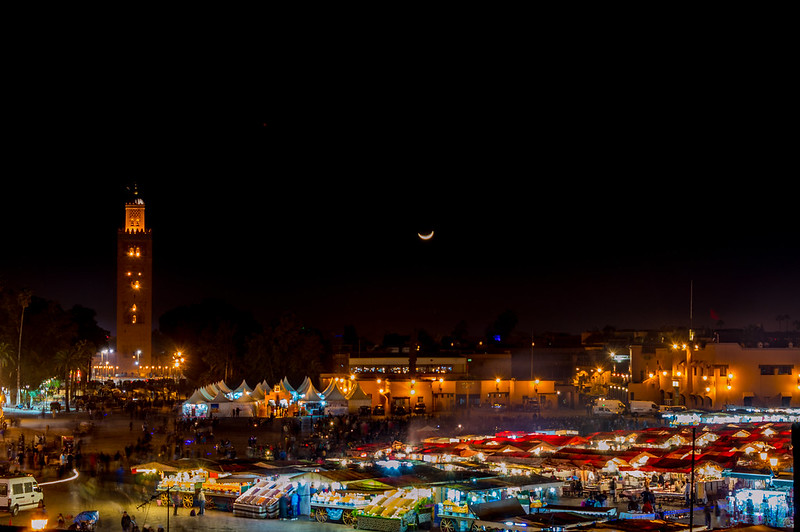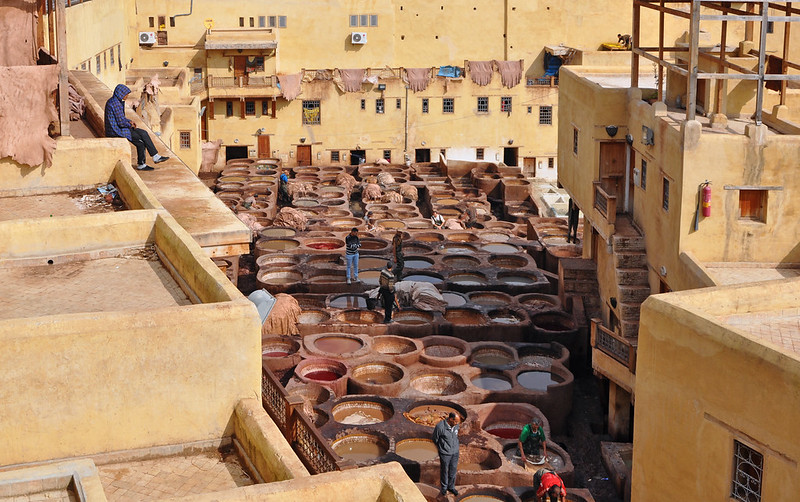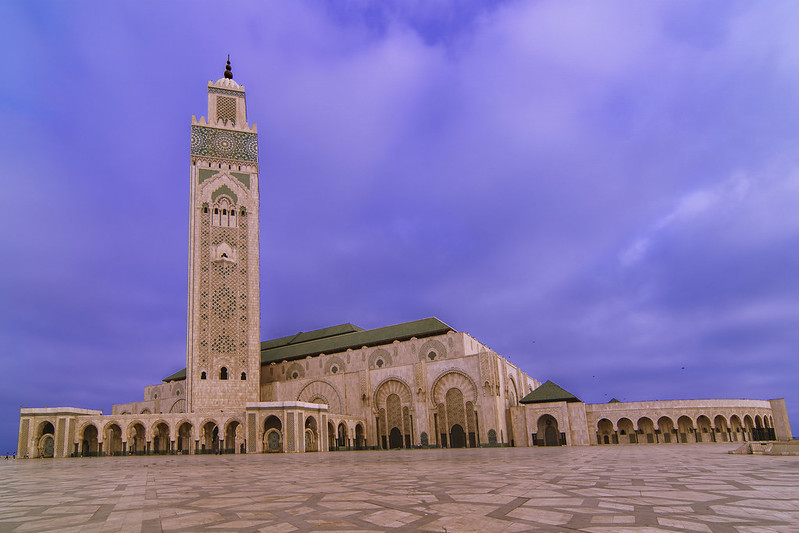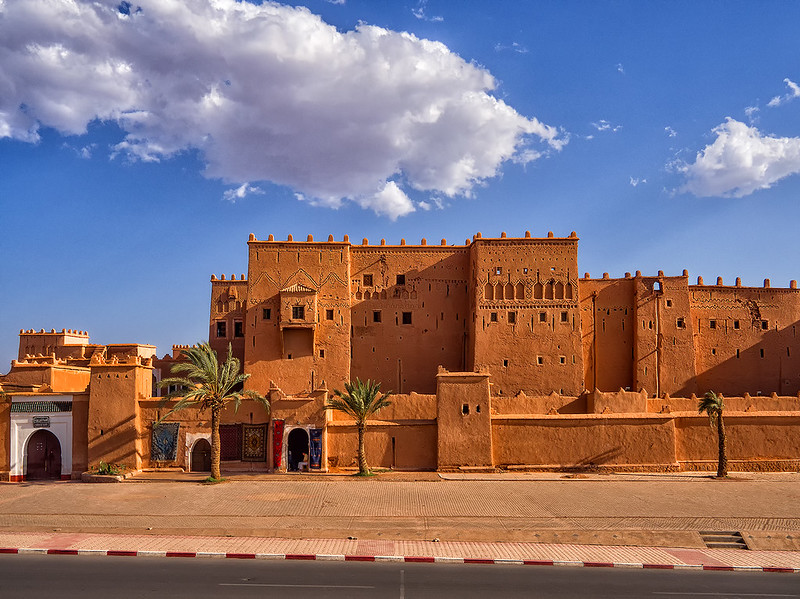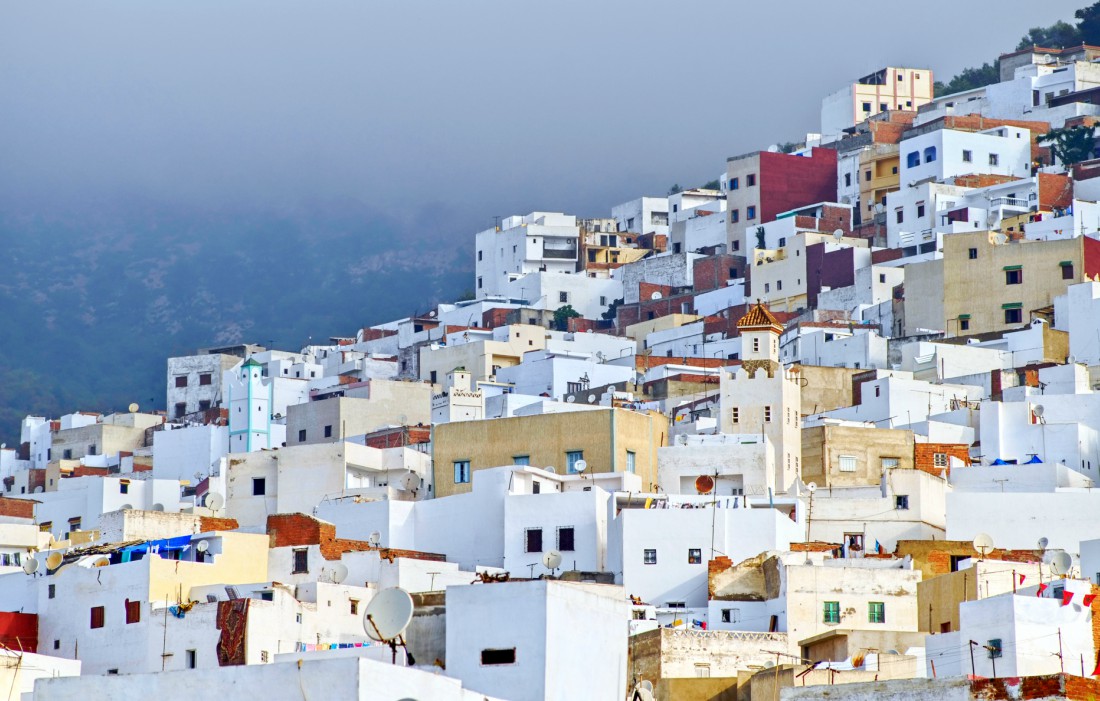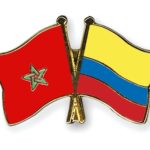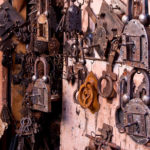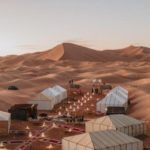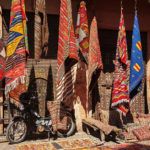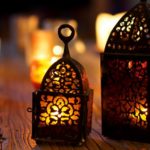kasbahtours
Travel to Morocco from Colombia
Colombia no longer needs a visa to travel to Morocco
The Kingdom of Morocco and the Republic of Colombia signed two bilateral agreements and two memorandums of understanding. The abolition of short-term residence visas for Moroccan and Colombian citizens holding a regular passport, and aims to exempt citizens of the two countries holding an ordinary passport and a diplomatic passport from short-stay visa requirements.
As KASBAH TOURS team, we warmly welcome our dear Colombian friends to enjoy and discover Morocco. We organize all kinds of tours in the country, private and group tours that are adapted to the wishes of our clients.
And once in Morocco, you can visit imperial cities, corners and places that retain the charm and essence of ancient traditions, Sahara desert the largest in the world with dunes up to 150 meters high in a caravan of camels, riding through the dunes, and enjoy the sunset, will be an image you will never forget.
Zagora or Merzouga? Which is the best desert?
If time and budget are not a problem, the ideal is to make an excursion of 3 or 4 or 5 days to the desert of Merzouga. It is a most beautiful place to discover the most impressive in Morocco. The landscapes that you will see during the days of the excursion are as worthwhile as the desert itself.
If instead you have less days for the excursion, visiting Zagora is the best or in other words the only way to be able to sleep one night in a haima in the desert.
Zagora
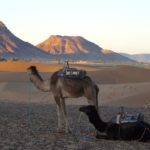 Zagora is known as a more arid desert. It is located in the valley of the Dra River at the foot of the Atlas Mountains and is the closest desert to Marrakech (about 353 km and about 6 hours). It is therefore the choice of travelers who are going to contemplate a “short” desert adventure, (two days and one night). The highlight of your visit is its large palm grove that runs from the city of Zagora to the entrance to the Sahara.
Zagora is known as a more arid desert. It is located in the valley of the Dra River at the foot of the Atlas Mountains and is the closest desert to Marrakech (about 353 km and about 6 hours). It is therefore the choice of travelers who are going to contemplate a “short” desert adventure, (two days and one night). The highlight of your visit is its large palm grove that runs from the city of Zagora to the entrance to the Sahara.
Highly recommended for those who do not want to miss the experience of sleeping in the desert, take a camel ride and sleep in the camp.
Merzouga
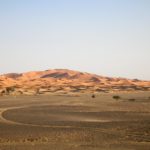 Merzouga, located in the southwest of the country, is the furthest option from Marrakech and the closest to Fez. For these reasons are the dunes that we see in all the advertising claims of the desert of Morocco.During the journey, which takes two days, you can enjoy spectacular places like the kasbah of Ait Ben Haddou, where movies and series like Lawrence of Arabia or Game of Thrones were filmed … The Valley of the Roses where a very special rose is cultivated, the Damascene Rose… the spectacular Dades Gorges or the Draa Valley.
Merzouga, located in the southwest of the country, is the furthest option from Marrakech and the closest to Fez. For these reasons are the dunes that we see in all the advertising claims of the desert of Morocco.During the journey, which takes two days, you can enjoy spectacular places like the kasbah of Ait Ben Haddou, where movies and series like Lawrence of Arabia or Game of Thrones were filmed … The Valley of the Roses where a very special rose is cultivated, the Damascene Rose… the spectacular Dades Gorges or the Draa Valley.
The Merzouga Desert offers a wide variety of unique and unforgettable adventure activities such as camel riding, quad biking, buggy…
Imperial cities of Morocco
Marrakech, Fes, Rabat, Casablanca and Meknes, the five imperial cities of Morocco offer visitors their labyrinthine medinas of colors, smells, tastes, sounds and textures, each with its own peculiarities.
Marrakech
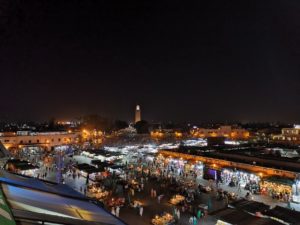 Located in the center of the country, at the foot of the Atlas Mountains. It has the largest traditional markets in the country, and one of the busiest squares in Africa, Jamaa el Fna. Like other imperial cities of Morocco, it is divided into two parts: the center with the great Medina and the new city. The most famous of Marrakech Jamaa el Fna, located near the famous Koutoubia Mosque, inside the old city. Throughout the city revolves around it and unites thousands of people a day. Other points of interest include the Koutoubia Mosque, built in 1157, is one of the largest Islamic mosques; or Al-Badi Palace, built in 1603 by Ahmed Mansour, the most illustrious of the Saadian sovereigns. At the time this palace was one of the largest and most luxurious in Africa.
Located in the center of the country, at the foot of the Atlas Mountains. It has the largest traditional markets in the country, and one of the busiest squares in Africa, Jamaa el Fna. Like other imperial cities of Morocco, it is divided into two parts: the center with the great Medina and the new city. The most famous of Marrakech Jamaa el Fna, located near the famous Koutoubia Mosque, inside the old city. Throughout the city revolves around it and unites thousands of people a day. Other points of interest include the Koutoubia Mosque, built in 1157, is one of the largest Islamic mosques; or Al-Badi Palace, built in 1603 by Ahmed Mansour, the most illustrious of the Saadian sovereigns. At the time this palace was one of the largest and most luxurious in Africa.
Fes
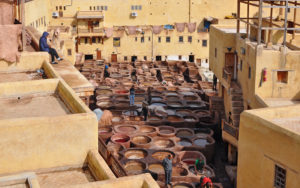 This imperial city, founded in the seventeenth century by Moulay Idriss, is a jewel of the Arab-Spanish civilization and is considered to cultural, artistic and religious institutions. The city is divided into three areas: Fes el Bali, old, home to mosques, madrasas and ancient palaces; Fes el Jedid manufacturing, the new with the Royal Palace and the neighborhood (Mellah) and the new city, where the French settled during the “protectorate”. Medina, is one of the largest medieval sites that exist today and its streets are a maze, full of merchants and artisans. Walking through it is like stepping back in time and you will be assaulted by noises, colors and smells of a crowd that fills everything …
This imperial city, founded in the seventeenth century by Moulay Idriss, is a jewel of the Arab-Spanish civilization and is considered to cultural, artistic and religious institutions. The city is divided into three areas: Fes el Bali, old, home to mosques, madrasas and ancient palaces; Fes el Jedid manufacturing, the new with the Royal Palace and the neighborhood (Mellah) and the new city, where the French settled during the “protectorate”. Medina, is one of the largest medieval sites that exist today and its streets are a maze, full of merchants and artisans. Walking through it is like stepping back in time and you will be assaulted by noises, colors and smells of a crowd that fills everything …
Rabat
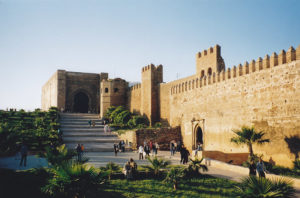 The capital, located on the Atlantic coast. Despite being the capital, Rabat is a quiet city with a special charm. It is the perfect city for walking and relaxing. It emphasizes the great mosque or in the Andalusian garden, which is in the Oudaya Museum offers several typical Moroccan Berber aboriginal objects, such as jewelry, pottery or spectacular carpets…
The capital, located on the Atlantic coast. Despite being the capital, Rabat is a quiet city with a special charm. It is the perfect city for walking and relaxing. It emphasizes the great mosque or in the Andalusian garden, which is in the Oudaya Museum offers several typical Moroccan Berber aboriginal objects, such as jewelry, pottery or spectacular carpets…
Casablanca
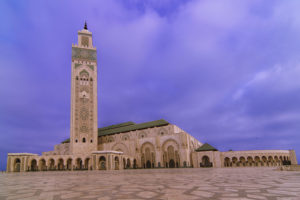 It is the economic capital and largest city. It is located 80 kilometers south of the capital, on the coast of the Atlantic Ocean. A rather noisy city, but undoubtedly the most modern city in the country, which has many attractions. Among which the famous Hassan II Mosque, the second largest in the world after Mecca, with a minaret of 210 meters (currently the highest in the world); the old Medina, surrounded by walls built in the eighteenth century, with bustling streets and stalls, where you can find a variety of items; Mohamed V or square, surrounded by beautiful buildings that form a great architectural ensemble.
It is the economic capital and largest city. It is located 80 kilometers south of the capital, on the coast of the Atlantic Ocean. A rather noisy city, but undoubtedly the most modern city in the country, which has many attractions. Among which the famous Hassan II Mosque, the second largest in the world after Mecca, with a minaret of 210 meters (currently the highest in the world); the old Medina, surrounded by walls built in the eighteenth century, with bustling streets and stalls, where you can find a variety of items; Mohamed V or square, surrounded by beautiful buildings that form a great architectural ensemble.
Meknes
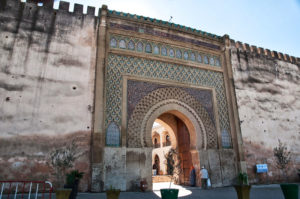 Located in the north country in the middle of a green valley at the foot of the Middle Atlas Mountains. It is one of the most important imperial cities, declared by UNESCO as a world heritage site and its wonderful urban center has a capital of Maghreb 17th century its souks are one of the most picturesque of the country, where everyday objects can become exceptional. Among its attractions we can highlight the Khyber Madrasa, the highest point of the city, with a beautiful minaret with colorful mosaics; Mausoleum of Moulay Ismail, one of the mosques that can access non-Muslims; or Bab Mansour, built in 1732, and is now considered one of the most majestic works and the largest gateway to Morocco and all of North Africa.
Located in the north country in the middle of a green valley at the foot of the Middle Atlas Mountains. It is one of the most important imperial cities, declared by UNESCO as a world heritage site and its wonderful urban center has a capital of Maghreb 17th century its souks are one of the most picturesque of the country, where everyday objects can become exceptional. Among its attractions we can highlight the Khyber Madrasa, the highest point of the city, with a beautiful minaret with colorful mosaics; Mausoleum of Moulay Ismail, one of the mosques that can access non-Muslims; or Bab Mansour, built in 1732, and is now considered one of the most majestic works and the largest gateway to Morocco and all of North Africa.
Accommodation in Morocco
For accommodation in Morocco you have several options depending on your budget and the type of trip you are going to make.
Upon arrival in Morocco, you have several accommodation options: from luxury hotels, to camps and bivouacs in the countryside, to budget hostels. All in an atmosphere of hospitality, well-being and friendliness, for an ideal opinion in the sunny land.
Morocco is a country of which a large part of its income comes from tourism, so it will not be difficult to find accommodation wherever you go. Here are the different types of accommodation available.
Riad
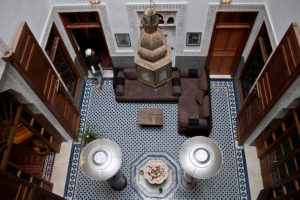 Riad is a Moroccan construction defined by an inner courtyard, around which the rooms and common areas are distributed. However, this denomination responds to two definitions, one historical and the other current.
Riad is a Moroccan construction defined by an inner courtyard, around which the rooms and common areas are distributed. However, this denomination responds to two definitions, one historical and the other current.
The same applies to the decoration. Although the style is usually traditional, we can find minimalist, modern, or simple riads. Many of these houses have been renovated to be converted into tourist establishments, adding private bathrooms in the rooms for example, and in these reforms their owners, although they usually maintain the traditional character of the houses, these can have very different styles. Of course, tiles, fabrics, plaster and carved or painted wood are not usually missing.
The city we choose can also define the style and characteristics of a riad. Marrakech for example, due to its high temperatures almost all year round, includes in its establishments small swimming pools (and sometimes not so small), open spaces and vegetation. For the walls they usually make use of stucco. If we go to northern cities, there are more tiles to protect the walls from humidity, the spaces are more closed and do not usually include swimming pools.
Hotels
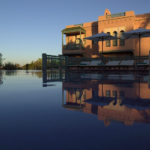 In Morocco you will have no problem finding the big western hotel chains, because it is a very touristy country, you will find hotels for all tastes and budgets.
In Morocco you will have no problem finding the big western hotel chains, because it is a very touristy country, you will find hotels for all tastes and budgets.
Kasbahs
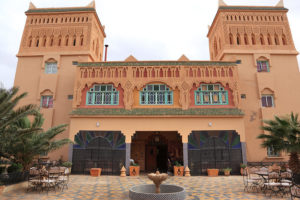 Accommodation in charming establishments, especially in southern Morocco, the Kasbahs are ancient manor houses and consisted of an enclosed area with towers. The walls are made of mud. These establishments, which do not have a star rating, usually have all the comforts of a hotel.
Accommodation in charming establishments, especially in southern Morocco, the Kasbahs are ancient manor houses and consisted of an enclosed area with towers. The walls are made of mud. These establishments, which do not have a star rating, usually have all the comforts of a hotel.
Hostels
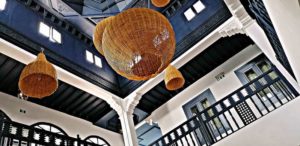 There are areas where the category of the different accommodations is as Hostels, there are many in the area of the Atlas and the desert, they are usually smaller establishments than hotels and do not have star rating. In many cases they are charming establishments located in special places and with all the comforts of a hotel.
There are areas where the category of the different accommodations is as Hostels, there are many in the area of the Atlas and the desert, they are usually smaller establishments than hotels and do not have star rating. In many cases they are charming establishments located in special places and with all the comforts of a hotel.
Shopping in Morocco
Shopping in Morocco is a must for any visitor to this fascinating country: browsing, bargaining and the feeling of having walked away with a bargain are all part of the wonderful experience in Morocco.
It’s also a great way to contribute to the local economy by supporting local businesses and producers, so don’t be shy, put on your bargaining hat and bag yourself some amazing souvenirs from Morocco.
The best souvenirs to take home from Morocco.
Carpets
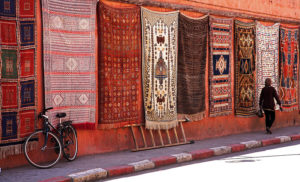 Berber rugs are traditional items dating back to the Paleolithic era. They are still made by hand in many rural areas of Morocco, without losing the customs and tradition in the way they are created.
Berber rugs are traditional items dating back to the Paleolithic era. They are still made by hand in many rural areas of Morocco, without losing the customs and tradition in the way they are created.
Carpet making is one of the most important handicraft activities in the country, being woven mainly by rural women, Berbers from the mountains. The culture of the carpet is deeply rooted in Morocco due to its value, which does not pass with time and for being a very used element to cover the floor of the homes.
The most prized rugs are made with wool from lambs less than a year old. The wool is spun by hand, tied with knots and produced in small cooperatives and factories. They are also made in cotton, silk and synthetic fibers.
Women weavers have accumulated, over the years, an artistic knowledge transmitted from generation to generation. This same woman artist-weaver, who carries with her a broth of innate and spontaneous creativity, spends days and nights weaving to remain the guardian of our traditions. Because as she weaves her works of art, she tells stories and passes on her culture to her children.
The tradition is being lost, as it is not very profitable due to the high cost of wool (10 kg for a normal carpet) and the time it takes to weave them, about two months of work.
Argan
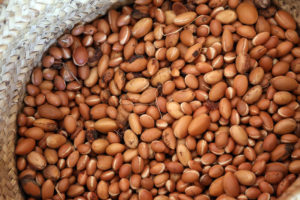 The argan tree is cultivated in the southern regions of the country. The oil is extracted from roasted seeds, there are two types of argan; cosmetic and culinary. You will want to specify which one you are looking for. True argan is thick, golden yellow in color and smells very nutty.
The argan tree is cultivated in the southern regions of the country. The oil is extracted from roasted seeds, there are two types of argan; cosmetic and culinary. You will want to specify which one you are looking for. True argan is thick, golden yellow in color and smells very nutty.
It is sold in bottles just as oil and you will also find many products with argan infused in them. Some of my favorites are argan shampoo and argan hand lotion.
Apply a small amount to the palm of your hand, rub it into your hands and spread evenly over the surface of damp (towel-dried) hair extending all the way to the ends. Warning: Avoid contact with eyes. If contact occurs, rinse immediately.
Argan oil repairs split and dry ends as it is super rich in nutrients and very moisturizing, thanks to the vitamins A, C and E it contains. Vitamin E, in particular, makes hair look healthy, shiny and bouncy.
Ceramic
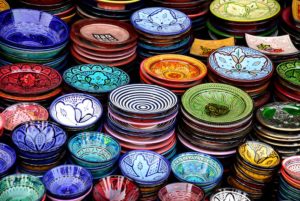 Ceramics is one of Morocco’s great artisanal specialties. They are handmade products made in the purest respect for tradition. Moroccan craftsmen use the technique of “double firing”, when the clay has obtained its shape and has been fired, it is painted and fired again to give it these bright colors, a hallmark of Moroccan ceramics. It can be for daily use or for decoration. It is food safe and dishwasher safe, the paint is lead free.
Ceramics is one of Morocco’s great artisanal specialties. They are handmade products made in the purest respect for tradition. Moroccan craftsmen use the technique of “double firing”, when the clay has obtained its shape and has been fired, it is painted and fired again to give it these bright colors, a hallmark of Moroccan ceramics. It can be for daily use or for decoration. It is food safe and dishwasher safe, the paint is lead free.
No doubt you will see hundreds of different types of handmade pottery and Moroccan ceramics during your visit. Plates, bowls, cups, decorative pieces, the list goes on and on. Moroccans love bright colors, but more and more neutral tones are appearing in the souks.
If you’re looking for a particular color or style, don’t hesitate to ask the merchant. If you’re flying, you can also ask to have these items wrapped or, better yet, if you plan to buy these items, add some bubble wrap to your bag. There is nothing worse than discovering broken pottery in your luggage.
Hammered metalwork
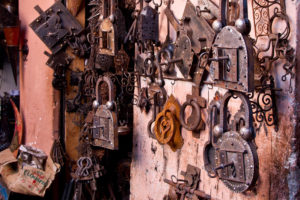 A long tradition in Morocco is the creation of engraved metalwork. Much of the work is in decorative pieces, but it is also found in more practical things like teapots, trays and jewelry. The items that can be purchased are a mix of hand-stamped and machine-stamped pieces. Careful inspection should be able to tell which is which.
A long tradition in Morocco is the creation of engraved metalwork. Much of the work is in decorative pieces, but it is also found in more practical things like teapots, trays and jewelry. The items that can be purchased are a mix of hand-stamped and machine-stamped pieces. Careful inspection should be able to tell which is which.
In the souks of most Moroccan cities you will be able to find workshops where metal items are made. You can see which are handmade and which are machine made, although many handmade items use a machine for some parts of the process. Hand engraving is a time honored tradition in Morocco.
Travel to Morocco during Ramadan
“Ramadan mubarak” or “happy Ramadan,” the entire Muslim world has been called upon to fast during daylight hours to observe Ramadan, one of the five pillars of the Muslim religion.
During this month, Muslims fast from all food and water from sunrise to sunset. During the nights, people break the fast with friends and family and wake up early before dawn to eat before beginning another day of fasting. People should also refrain from smoking cigarettes and avoid bad temper and gossip.
Ramadan is a time to reflect on the blessings each person has received and to understand the suffering of those who go without basic necessities such as food and water. Many Muslims attend special prayers known as (Taraweh) in mosques after breaking their fast.
I am not a Muslim, should I fast?
The simple answer is no, you do not need to fast. Restaurants, cafes and other eating establishments will remain open for the most part. No one expects tourists to fast and they are likely to be concerned about their health and well-being if they try. Some people worry about eating in front of Muslim friends or guides. Don’t be. They are used to this and it really isn’t a problem. If you are concerned, you might consider eating inside restaurants or out of sight on the street.



